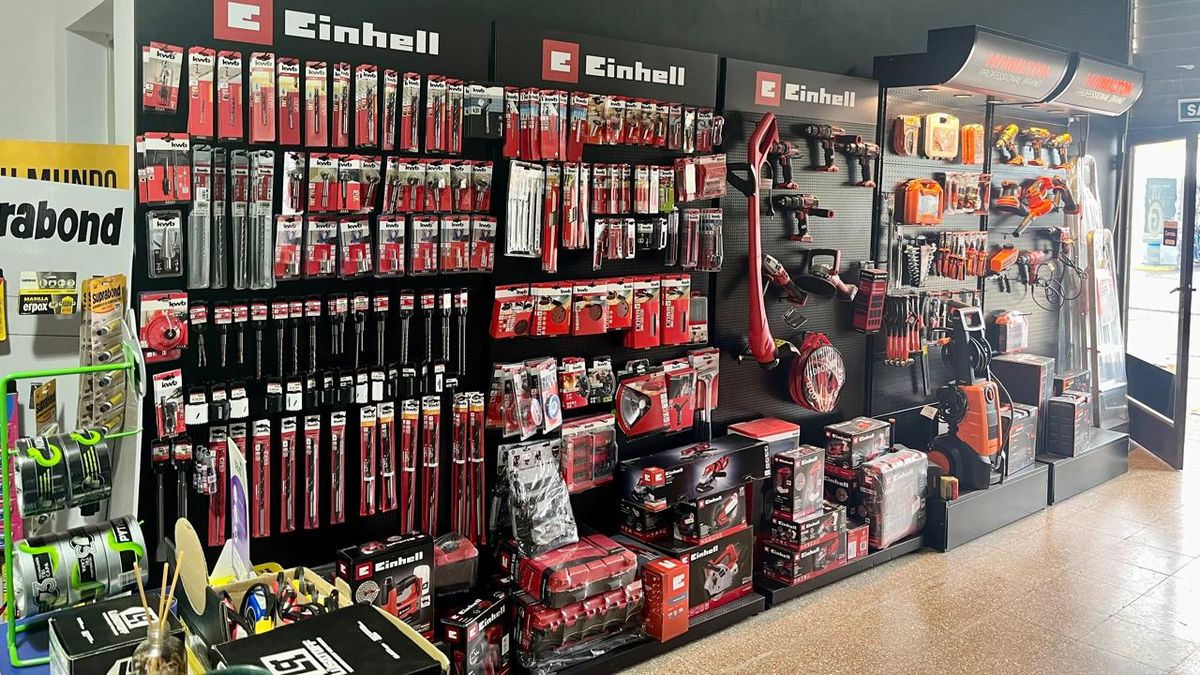According to different actors in the sector, the greatest increases were recorded in imported inputs, with increases between 8% and 12%, while materials such as steel and floors maintained their values.
From the Ferretero sector, Agustín Giffiof the firm Gibeva explained that the replacement of products remains at normal levels and that not all suppliers have adjusted prices. “Some increased between 8% and 11%, but not all brands applied increases. The most affected inputs were those that depend on the official dollar, such as grinders, drills and compressors, which increased approximately 11% in these three days.”
Regarding purchase strategies, Giffi recommends caution and wait between 7 and 10 days to see how prices evolve. “It is key to take advantage of promotions that fit the needs of each consumer,” he says.
On the other hand, Pablo Gaytánby Corralón Ciudadela, confirmed that the increases mainly affected imported products, such as those for terminations, while national supplies such as lime and cement maintain their value.
From the termination sector, the firm Barugel stressed that there were no modifications to the prices of the products and that the companies also did not make changes. In addition, they pointed out that they launched a promotion on imported porcelain floors, which promoted sales since Monday.
Regarding the recommendations on storage, Giffi suggests maintaining a prudent stock, especially in high -rotation products, without accumulating beyond two months, since there is still ongoing price rearrangement.
The values to build and reform homes were complicated in recent months and doubled in 2024. Today in the city of Buenos Aires no low housing of US $ 1,600 per square meter and the premium exceeds US $ 2,200 per m2 per m2
More opinions
Uriel Britmanby Sygsa, explained that, in the first days after the lifting of the stocks, there was a strong volatility in the exchange rate, which resulted in immediate adjustments of price lists, especially in dollarized products such as iron and steel. “During the first 48 hours, sales and delivery of materials were stopped, while suppliers and distributors expected greater clarity about the value of the dollar and import conditions,” he said.
The sale of construction materials in September increased by 15.5%
The values to build were doubled in 2024
Regarding which materials more expensive, Britman identified increases from 10% to 15% in iron and steel, From 15% to 25% in imported coatings and premium taps, and between 10% -18% in membranes and chemicals, all with a high dependence on the dollar and brake in imports.
As for purchase strategies, Britman recommended a mixed strategy: Stocking critical products whose price is directly tied to the dollar or that usually suffer interruptions in the supply chain, and Take advantage of promotions punctual in national materials or with high stock available, such as ceramics, cement and lime. He also suggested to wait a few days to observe market stabilization.
From the sector they reported that some suppliers even anticipated that they could refract operations already carried out. At the same time, “we noticed a more conservative posture by the distributors, who chose to protect stock and sell very much until the panorama stabilizes,” Britman added.
Example of variation in prices after the end of the stocks
During the first days after the removal of the exchange rate, different inputs showed adjustments in their values. According to information from Agustín Giffi, some tools and hardware materials recorded moderate increases:
-
100L air compressor: passed from $ 518,000 to $ 569,800.
-
Drill to batteries: of $ 238,000 to $ 264,200.
-
60J demolition: of $ 425,000 to $ 459,000.
-
2.5 electrodes for welding: of $ 8,150 to $ 8,860.
This behavior responds, in part, to the update of price lists and volatility in the exchange rate, especially in imported products.
A lime bag Of 25 kilos, which was at $ 15,500 until Friday, suffered a slight rise, and now sold between that cost and $ 16,000 per unit. And a 50 kilos cement bag, which was previously $ 20,000, is now offered at $ 21,000 or $ 21,500.
Tips to buy well
From the sector they also advise to save buying dollars to allocate them to works or the change of home openings. In that sense, those who wish to make these investments should be informed about how to acquire foreign tickets now that the stocks were released.
Maximiliano Olmiof architect X hour, warned that some reforms may not be profitable if they are not carried out with criteria. “Installing supply ceramics or low quality floors can lead the buyer to redo the work, which cancels the investment,” he explained.
In addition, he pointed out that superficial changes, such as painting on moisture spots without solving the problem, generate distrust.
He also highlighted the importance of renewing key facilities, such as pipes, to prevent reforms from being seen as a “makeup.” “If the pipes are still leading 70 years ago, the buyer knows that there will be problems and can use it as an argument to negotiate down,” he added. Therefore, he recommended prioritizing improvements that really add property value.
Source: Ambito




